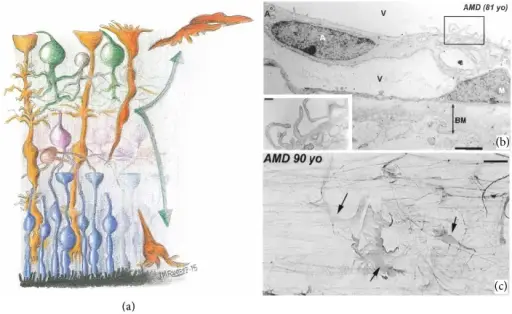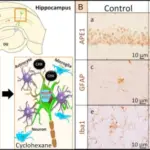Astrocytes undergo a process known as gliosis in response to injury. Gliosis is characterized by hypertrophy, proliferation, and subsequent scar formation via the activation of signaling pathways.
How do Astrocytes React to Injury?

Müller cell gliosis. Schematic drawing illustrating Müller cell proliferative gliosis (a). Transmission electron microscopy of a retina from an 81-year-old patient with age-related macular degeneration (b). Immunoperoxidase anti-GFAP. Retinal whole-mount from a 90-year-old patient with age-related macular degeneration (c). (a) Müller cells reenter into the cell cycle and migrate to the subretinal space and the vitreous humor where they contribute to forming the subretinal membranes and the epiretinal membranes, respectively. (b) Epiretinal astroglial membrane formed by astrocyte and Müller cells located in the vitreous humor. The Müller cells adhere to the vitreous face of the inner limiting membrane. The inset shows the astrocyte microvilli. (c) Glial membrane at the vitreoretinal interphase showing strongly GFAP+ Müller cells (arrow). A: astrocyte; BM: basement membrane; M: Müller cells; v: vitreous (schematic drawing modified from [18]; (b) and (c) from Figures 8F and 12A of [47] with permission).Retinal Macroglial Responses in Health and Disease.
de Hoz R, Rojas B, Ramírez AI, Salazar JJ, Gallego BI, Triviño A, Ramírez JM - BioMed research international (2016). Not Altered. CC.


